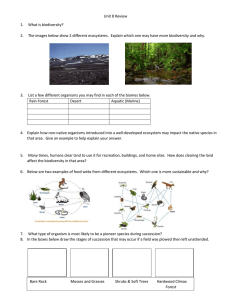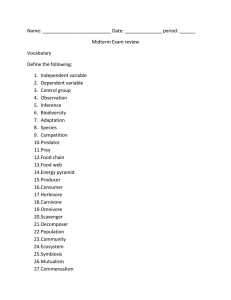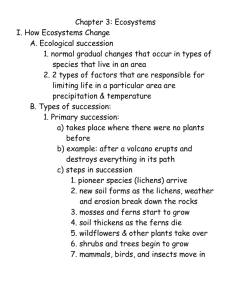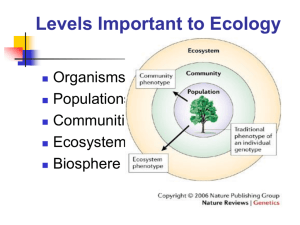E c o l
advertisement
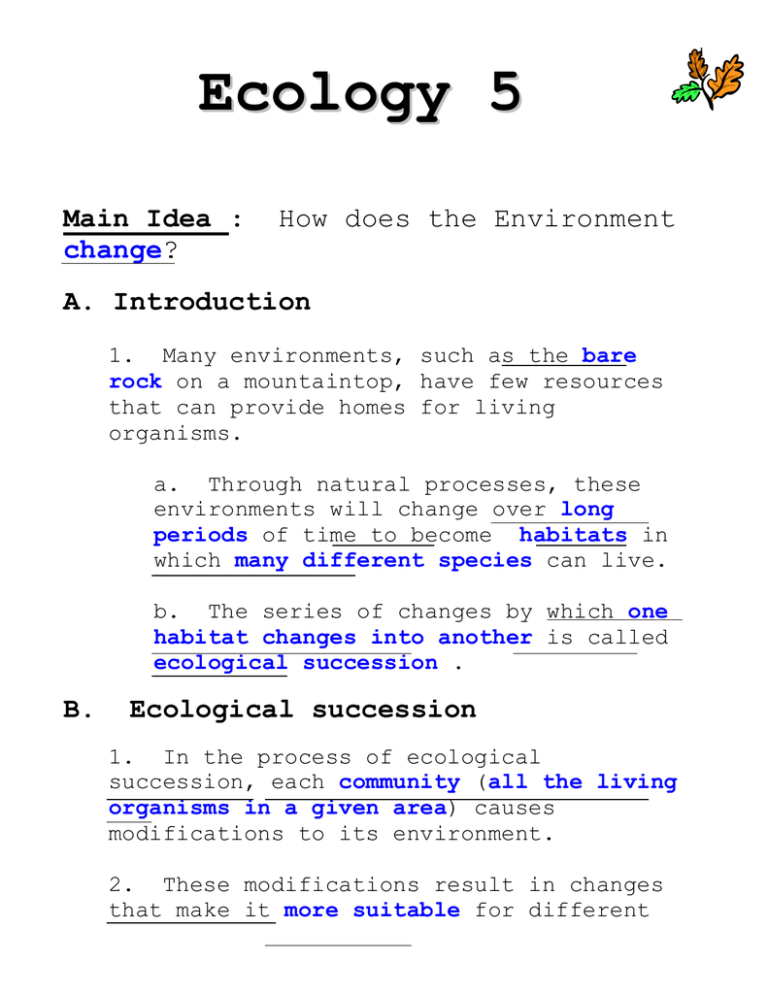
1 Ecology 5 Main Idea : change? How does the Environment A. Introduction 1. Many environments, such as the bare rock on a mountaintop, have few resources that can provide homes for living organisms. a. Through natural processes, these environments will change over long periods of time to become habitats in which many different species can live. b. The series of changes by which one habitat changes into another is called ecological succession . B. Ecological succession 1. In the process of ecological succession, each community (all the living organisms in a given area) causes modifications to its environment. 2. These modifications result in changes that make it more suitable for different 2 groups of living organisms in that area ( community ). a. The original species there may find it harder these changes, while the coming in may be able to successfully for the new that lived to adapt to new species compete more niches. b. For example, as grasses grow in an area with very shallow soil, they add organic matter (dead grass), making the soil deeper and more fertile. c. Shrubs are then able to live in this modified environment (because there is more soil now) and will eventually produce enough shade to eliminate the grasses growing below them (because the shrubs out-compete the grass for sunlight ). d. Over a period of many years, these gradual changes may result in the formation of a stable forest community that can last for hundreds or even thousands of years. C. Alteration (changing) of Stable Ecosystems 1. Climatic changes , natural disasters , and the activities of animals (including humans) can alter stable ecosystems. 3 a. These changes may occur rapidly, perhaps due to a forest fire or flood , or slowly, as when a long-term drought or climate change occurs. 2. Altered environments undergo a slow series of successional changes that return them to a point where long-term stability is possible. a. In this process, an community of organisms different communities time ranging from a few thousands of years. D. existing is replaced by over a period of decades to Patterns of Succession 1. There are two commonly observed patterns of succession: a. A community of mostly bare rock will gradually accumulate soil , leading to a progression of grasses and shrubs , 4 and eventually to a forest . b. The change of a lake community to a forest is another example of ecological succession. The lake will gradually accumulate sediments from erosion and the buildup of organic debris from plants and dead organisms . As the lake fills in, it becomes shallower. After many years, it may become a swamp . The filling-in continues, and eventually a mature forest may result. There will be a ___________ quiz on this entire packet on There will be a _________ TEST on this entire packet on . . Unit XVI Ecology Notes [Notes2000 #8]

